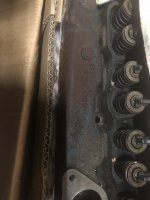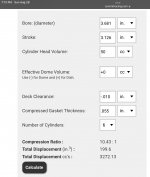Retirement has allowed me to start again on this great project here are the plans so far…
1965 mustang will be replacing the original engine with the following..
Head is D7BE 8090 AB. From 1977 Maverick ?
want to use the Offy 3 carburetor kit , mill the head .075”
Engine is C6DE 6015 P From 67 Falcon
deck height on the block milled to .000” goal is .040 quench
use flat head pistons. Not sure on the cam yet.
I would like to start With the head first. I see many Carter YF style carbs available for reasonable prices. Is this a standard setup for my purpose? They range from $69 to $129 in price.
Along with a new 5 speed transmission, this build is for a weekend street driver with higher performance engine. All advice welcome to fine tune the build.
1965 mustang will be replacing the original engine with the following..
Head is D7BE 8090 AB. From 1977 Maverick ?
want to use the Offy 3 carburetor kit , mill the head .075”
Engine is C6DE 6015 P From 67 Falcon
deck height on the block milled to .000” goal is .040 quench
use flat head pistons. Not sure on the cam yet.
I would like to start With the head first. I see many Carter YF style carbs available for reasonable prices. Is this a standard setup for my purpose? They range from $69 to $129 in price.
Along with a new 5 speed transmission, this build is for a weekend street driver with higher performance engine. All advice welcome to fine tune the build.


